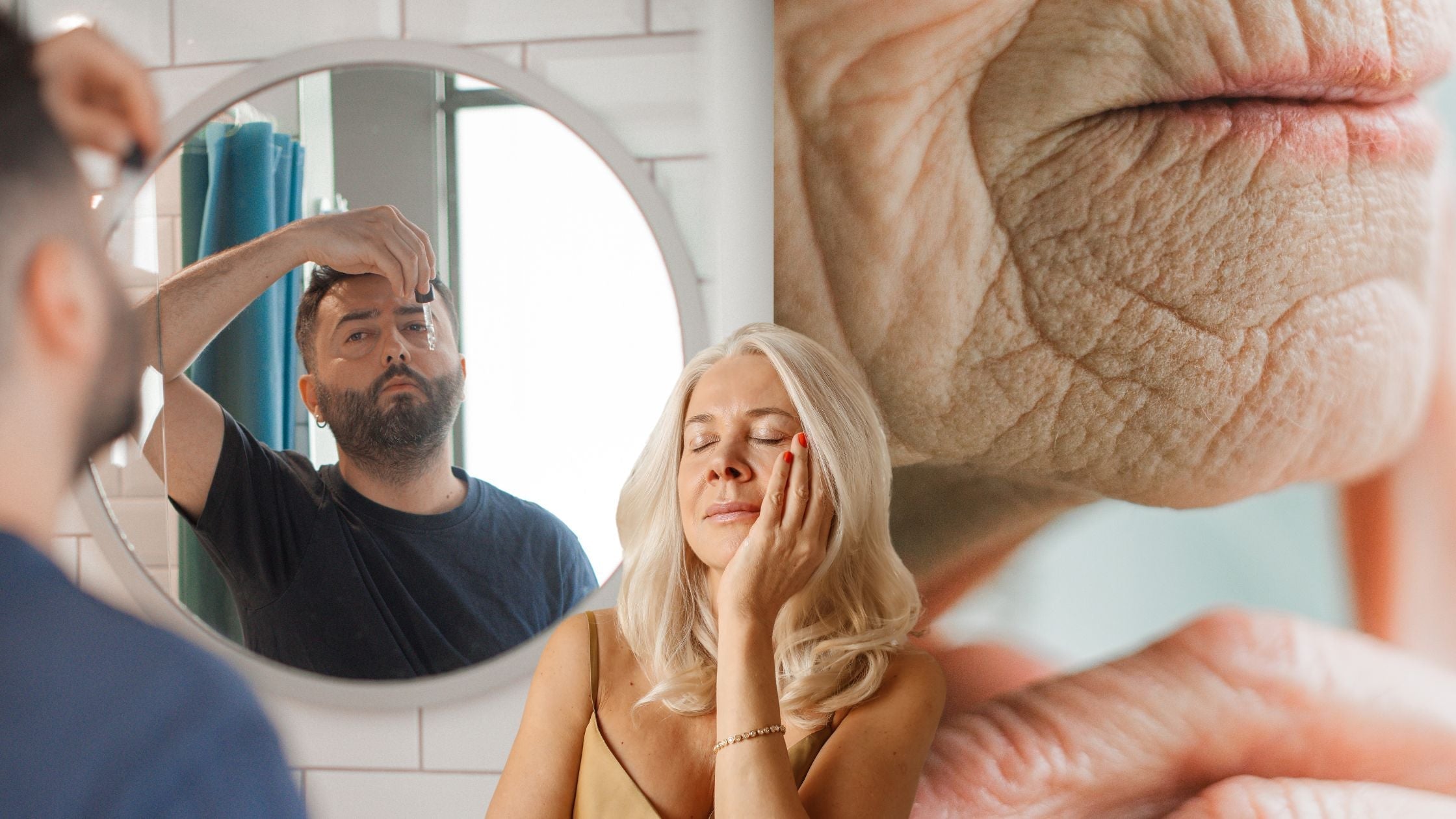
Best Home Remedies for Actinic Keratosis Treatment: Natural Ways to Support Your Skin
When it comes to treatment for actinic keratosis, the internet is full of “miracle cures” that promise to heal skin conditions overnight using natural ingredients—but many of these claims are not backed by science. One example that gained global attention was wellness influencer Belle Gibson, who falsely claimed to have cured her cancer through diet and natural methods. Her story is a cautionary tale about the dangers of avoiding medical treatment for serious conditions.
Actinic keratosis (AK), also referred to as AKs, is a common skin condition caused by prolonged sun exposure. It typically presents as rough, dry, or scaly patches—known as lesions—on sun-exposed areas like the face, scalp, ears, arms, and hands. Although these lesions are initially benign, they carry the potential to develop into squamous cell carcinoma—a serious type of skin cancer. According to clinical research, between 40% and 60% of squamous cell carcinomas begin as untreated actinic keratosis lesions.
Because of this risk, early detection and appropriate treatment are essential. Dermatology experts emphasize that AK is not just a cosmetic concern—it’s a visible sign of UV damage and cellular mutation. If left untreated, it can lead to significant health consequences and even loss of healthy tissue.
Dermatologists commonly use cryotherapy, topical chemotherapy creams (like 5-fluorouracil), photodynamic therapy, or laser ablation to remove the abnormal cells. The choice of treatment depends on several factors including the number of lesions, their size, the patient's medical history, and the potential cost of procedures. While medical treatment remains the gold standard, many people look for complementary approaches to support their skin and enhance their overall wellness during the healing process.
Natural and at-home remedies for actinic keratosis should never replace professional care. However, some may help soothe irritated skin, provide comfort, and promote general health—especially when used under the guidance of a healthcare provider or a professional in dermatology.
Let’s explore the best known natural ways that can support your skin while you're treating actinic keratosis or working to prevent it.
Apple Cider Vinegar for Skin: An Ancient Remedy for Actinic Keratosis
Apple cider vinegar (ACV) has a long history in folk medicine, often used to treat everything from infections to indigestion. Today, it's a popular home remedy for various skin conditions, including actinic keratosis.
Some anecdotal evidence suggests that applying diluted ACV topically can help dry out keratotic lesions. The acetic acid in vinegar may act as a mild exfoliant, encouraging the removal of damaged cells. However, clinical studies on this are limited, and improper use can cause irritation or burns.
To be safe, never apply undiluted vinegar to your skin. Always do a patch test and talk to your doctor before using ACV as a treatment for actinic keratosis.
Green Tea Extract and Actinic Keratosis: A Natural Skin Support Treatment
Green tea, rich in the powerful antioxidant EGCG (epigallocatechin gallate), has been studied for its cancer-fighting and anti-inflammatory effects. This ancient remedy, widely used in Asian medicine, has modern research behind it—particularly in the context of skin health and sun damage.
Topical formulations of green tea extract have shown promise in slowing the growth of abnormal skin cells. Some studies, published in peer-reviewed journals and available on platforms like PubMed and Google Scholar, suggest that EGCG may inhibit the progression of actinic keratosis.
While green tea extract may support healing, it’s not a standalone treatment. Consulting a professional in dermatology is important for determining whether natural options can complement conventional therapies.
Aloe Vera for Keratosis: Ancient Skin Healer with Modern Applications
Aloe vera is one of the most widely recognized plants in the world for skin healing. Used for more than 6,000 years in Egypt, Greece, India, and China, it’s known for its ability to soothe burns, wounds, and inflammation.
In cases of actinic keratosis, aloe vera can provide comfort but not a cure. Its gel contains compounds like aloin and salicylic acid that moisturize dry patches and support cellular regeneration.
Daily application of aloe gel may ease discomfort, especially if you're undergoing more aggressive treatments such as cryotherapy. It’s also a gentle way to support your skin through the healing process.
Coconut Oil for Skin Health: A Natural Moisturizer for Actinic Keratosis
Coconut oil is rich in lauric acid and is known for its antimicrobial and hydrating properties. It’s a gentle and natural way to keep skin soft and resilient during recovery from actinic keratosis.
Though it doesn’t reduce the number of lesions, coconut oil can alleviate dryness and itching—especially for individuals healing from procedures like freezing or topical chemotherapy. In some cultures, it has also been part of traditional skincare education.
Castor Oil to Treat Skin: A Time-Tested Natural Remedy
Used in ancient Egypt and Ayurvedic education, castor oil has long been prized for its soothing and anti-inflammatory effects on the skin.
Some people use castor oil as a topical aid to manage symptoms of actinic keratosis, hoping to soften rough patches and reduce flaking. While it won’t eliminate lesions, it may contribute to skin health when used regularly. The application of castor oil is often a prolonged process, so results, if any, may not appear immediately.
Essential Oils in Keratosis Treatment: Tea Tree Oil and Frankincense
Essential oils like tea tree and frankincense have anti-inflammatory and antimicrobial properties. While they can’t replace medical treatment for actinic keratosis, they may help soothe adjacent areas of the skin.
Always use essential oils with a carrier oil and never apply them directly without a test patch, as they can cause irritation or allergic reactions—especially on sun-damaged skin.
Dietary Changes and Skin Health: Supporting Actinic Keratosis From Within
The food we eat directly affects our skin health. Diets rich in antioxidants, omega-3s, and vitamins can boost immune defense and support your body’s ability to repair UV-damaged cells.
Eating more berries, leafy greens, and fatty fish not only supports your skin’s resilience but may also slow the development of actinic keratosis. Hydration is equally vital during any healing process.
Zinc, vitamin C, and vitamin E are especially important when supporting the skin barrier. These nutrients help in cellular repair and collagen production, which may help your skin bounce back from sun damage. Adding green tea and turmeric to your diet may also offer additional protective benefits.
The Importance of Regular Skin Checks and Early Detection
Incorporating natural remedies into your skincare routine is fine—but it should never replace regular visits to a dermatology clinic. AKs can be difficult to distinguish from other skin conditions, and only a trained dermatologist can accurately diagnose and determine whether a lesion is benign or precancerous.
Perform regular self-checks and schedule annual skin exams. If you notice any new growths, changes in shape or color of existing lesions, or experience persistent irritation, consult your doctor right away. Early treatment can prevent complications and may reduce the need for more invasive interventions later.
Combining Natural and Medical Approaches to Treat Actinic Keratosis
There’s no denying the appeal of natural remedies. They offer comfort, self-care, and centuries of cultural knowledge. But when it comes to actinic keratosis, proper diagnosis and medical oversight are essential.
A holistic approach—combining trusted natural products with evidence-based dermatology protocols—can offer the best results. Whether you’re trying to prevent lesions from forming or healing from existing AKs, talk to your healthcare provider to create a plan that balances tradition, science, and lifestyle.
By understanding the root causes of actinic keratosis, learning how to identify early lesions, and incorporating nourishing routines into your daily life, you can take better control of your skin health.
Don’t skip your yearly dermatology appointment, and don’t underestimate the power of knowledge. With ongoing education, consistent self-care, and the guidance of professionals, it's possible to manage actinic keratosis and enjoy healthier, more resilient skin.




